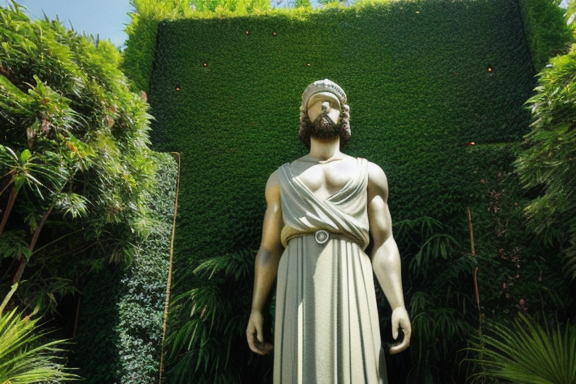The story of Adam and Eve is well-known in religious and cultural narratives. It holds a significant place in the Bible and has been the subject of much interpretation and analysis. This foundational tale is found in the book of Genesis, the first book of the Old Testament, and serves as the origin story of humanity. It explores themes of creation, temptation, and the consequences of disobedience.
In a remarkable act of divine creation, God formed Eve, the first woman, from one of Adam’s ribs while he slept**. When Adam woke up, he was overjoyed to find Eve by his side. They were both naked and felt no shame. They lived in perfect harmony with each other and with God, enjoying the bountiful blessings of the Garden.
The story takes a dramatic turn when Eve encounters a cunning serpent who tempts her to eat from the forbidden tree of knowledge of good and evil. Despite God’s warning that eating from this tree would lead to death, Eve succumbs to the serpent’s deceitful words and takes a bite of the fruit. She also offers it to Adam, who also eats it.
This act of disobedience, known as the Fall of Man, resulted in their expulsion from the Garden of Eden. As a consequence, Adam and Eve experienced shame, hardship, and the knowledge of good and evil. They were no longer able to enjoy the same intimate relationship with God and were banished from the paradise they once called home.

The story of Adam and Eve is rich in symbolism and continues to captivate readers and scholars alike. It raises profound questions about the nature of humanity, the consequences of disobedience, and the complexities of the human condition. **Adam and Eve serve as archetypal figures in many religious and philosophical traditions**, representing the struggles and triumphs that all human beings face.
Throughout history, this story has inspired countless works of art, literature, and music. Artists have depicted the scene of Adam and Eve in the Garden of Eden in various ways, capturing their innocence, vulnerability, and the moment of temptation. The story also serves as a cautionary tale, reminding humanity of the importance of obedience and the potential consequences of disregarding divine guidance.
About Adam’s Creation
According to the Bible, Adam was the first man created by God. He was formed from the dust of the ground, and God breathed life into him, making him a living being.
The exact height of Adam is not mentioned in the Bible. However, it is believed by some scholars that Adam was a giant, standing at an impressive height.
Many ancient texts and legends suggest that Adam’s height was around 90-100 feet. These accounts describe him as a towering figure, larger than any other being on Earth.
Alternative Perspectives
While some believe in the literal interpretation of Adam’s height, others argue that these accounts are symbolic or exaggerated. One interpretation suggests that Adam’s height represents his status as the first human and the pinnacle of creation. It symbolizes his authority and dominion over the Earth.
Another perspective suggests that the description of Adam’s height may have been influenced by ancient myths and legends that often portrayed legendary figures as giants.

These alternative viewpoints provide interesting insights into the possible symbolism and cultural influences surrounding Adam’s height. Let’s explore them further:
Symbolism of Adam’s Height
According to those who interpret Adam’s height symbolically, his towering stature represents his elevated position as the first human created by God. It signifies his authority and dominion over the Earth, suggesting that he was given a special role in the divine plan. This symbolic interpretation aligns with the idea that Adam was created in the image of God and was meant to be a representative of God’s authority on Earth.
Additionally, some scholars argue that the exaggerated height of Adam serves as a metaphor for his spiritual and moral stature. It highlights his moral perfection and righteousness, emphasizing his unique relationship with God.
Influence of Ancient Myths and Legends
Another perspective on Adam’s height suggests that the description may have been influenced by ancient myths and legends that often portrayed legendary figures as giants. In many ancient cultures, larger-than-life heroes and demigods were depicted as towering beings with immense strength and power. These mythical accounts could have influenced the portrayal of Adam’s height in certain traditions.
It is important to note that ancient texts and legends often incorporated symbolism and exaggerated elements to convey deeper meanings or emphasize the significance of certain characters. This could explain why some accounts describe Adam as an exceptionally tall figure.
Conclusion
The exact height of Adam in the Bible remains a mystery. The interpretations and speculations surrounding his height provide intriguing insights into the cultural and religious significance of the story. Whether symbolic or literal, the story of Adam continues to captivate and inspire people, inviting them to ponder the origins of humanity and the mysteries of creation.
While some believe in the literal interpretation of Adam’s height, others argue that these accounts are symbolic or exaggerated. One interpretation suggests that Adam’s height represents his status as the first human and the pinnacle of creation. It symbolizes his authority and dominion over the Earth. This perspective emphasizes the grandeur and significance of Adam as the progenitor of the human race.
Another perspective suggests that the description of Adam’s height may have been influenced by ancient myths and legends that often portrayed legendary figures as giants. This view highlights the cultural context in which the story of Adam was written, where larger-than-life characters were common motifs. It underscores the symbolic nature of the narrative, emphasizing the profound theological and moral teachings embedded within the text.
The diversity of interpretations regarding Adam’s height showcases the richness and complexity of biblical narratives. It reminds us that the Bible is not merely a historical record but a collection of texts that encompass diverse literary genres, theological messages, and cultural influences. The story of Adam invites us to explore the depths of human existence, our relationship with the divine, and the profound questions that have puzzled humanity for millennia.

Rockin’ the faith, one verse at a time!
Growing up, the Bible’s stories deeply impacted me. Now, with over 15 years of preaching experience, I blend timeless teachings with modern technology, making them relevant for today’s world.
Bible Hub Verse is my platform to share historical insights and thought-provoking articles, exploring both familiar and uncommon Christian topics. My passion is building a welcoming online space for everyone to learn, grow in their faith, and discover the Bible’s enduring message.
Join the journey!
God bless you.















